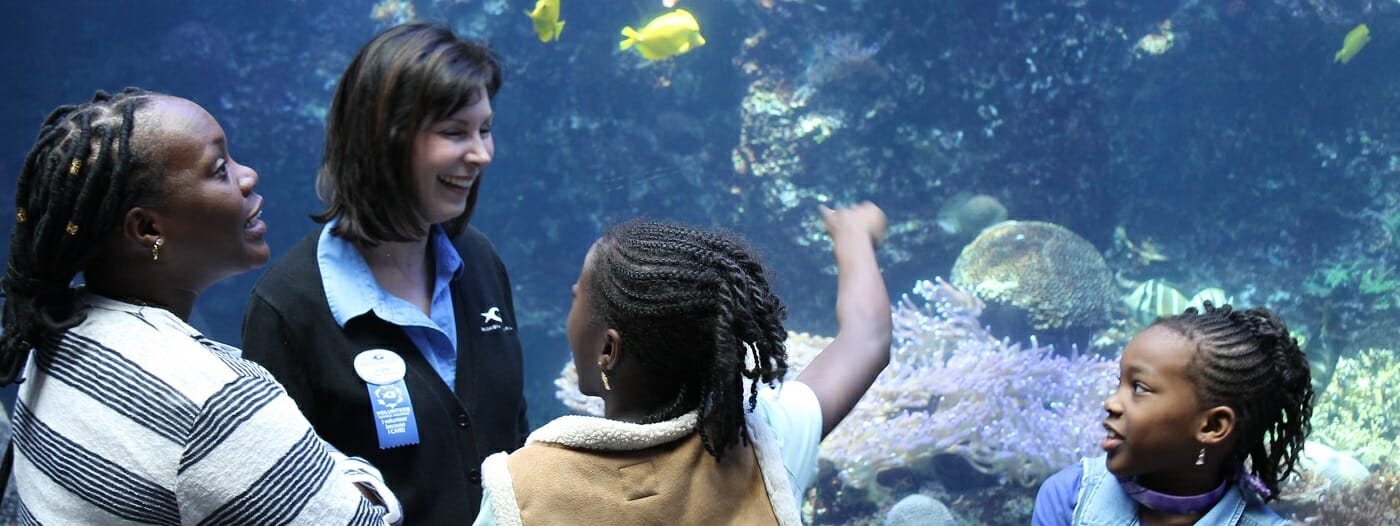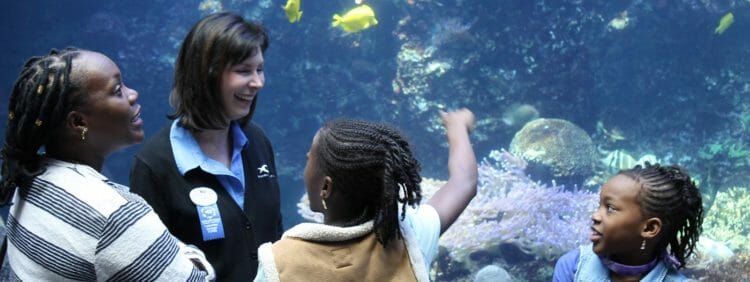Animals come in a wide variety of shapes, sizes, and colors– all of which can change depending on their life cycle stage. Through engaging activities and exploration, students will be challenged to think like scientific researchers by investigating the unique life cycles of plants and animals at Georgia Aquarium. Students will also learn about how the life cycles of these marine organisms compare to the life cycles of humans. Finally, students will demonstrate their knowledge by properly sequencing the life stages of the aforementioned aquatic plants and animals and comparing and contrasting the lives of organisms at Georgia Aquarium.
Georgia Standards of Excellence:
S2L1. Obtain, evaluate, and communicate information about the life cycles of different living organisms.
- Ask questions to determine the sequence of the life cycle of common animals in your area: a mammal such as a cat, dog or classroom pet, a bird such as a chicken, an amphibian such as a frog, and an insect such as a butterfly.
Next Generation Science Standards:
2-LS4-1 Make observations of plants and animals to compare the diversity of life in different habitats.

